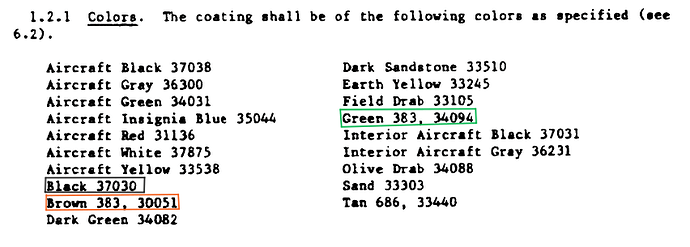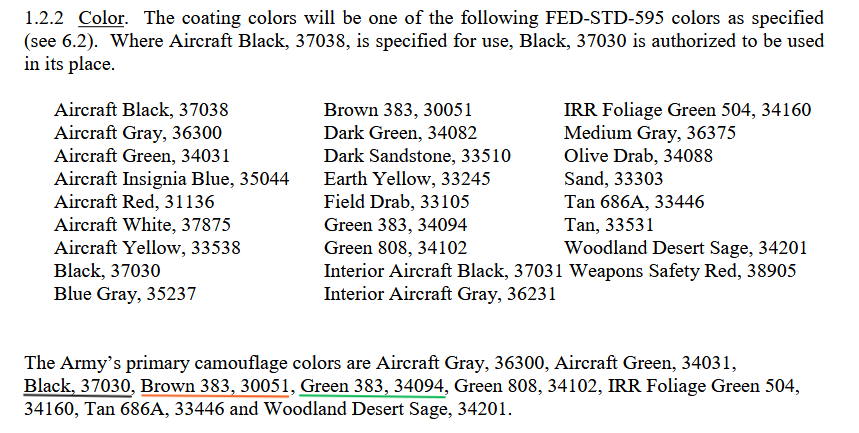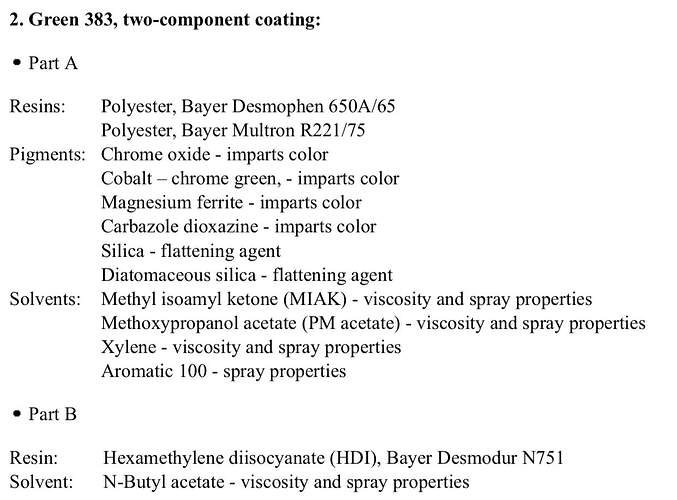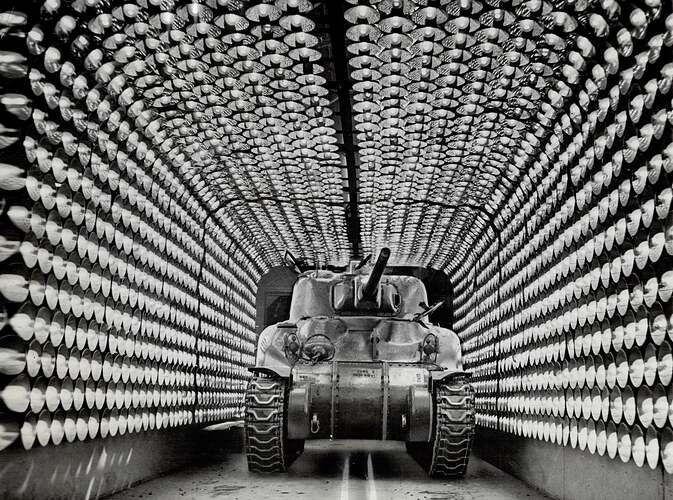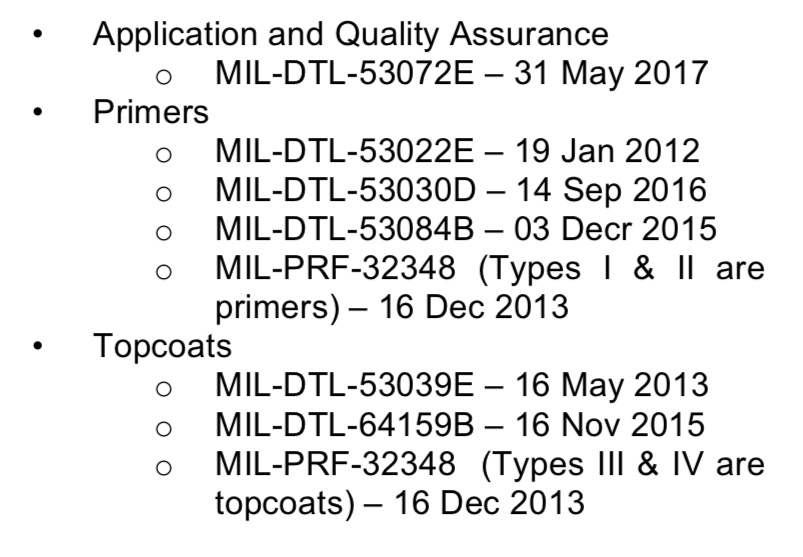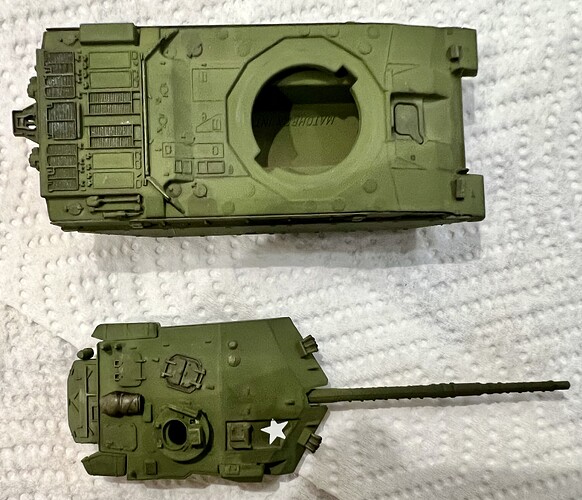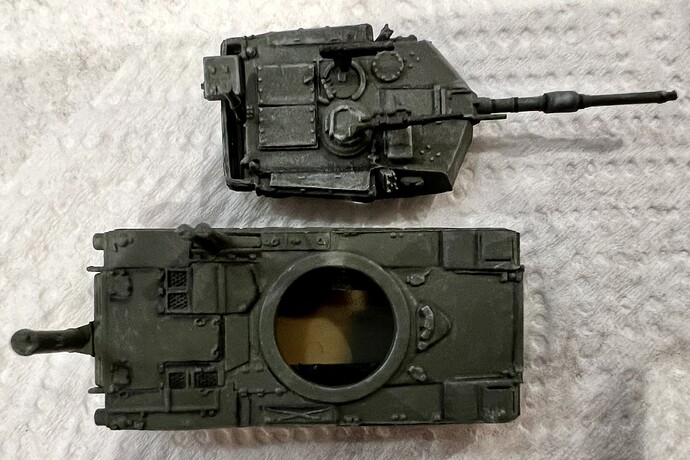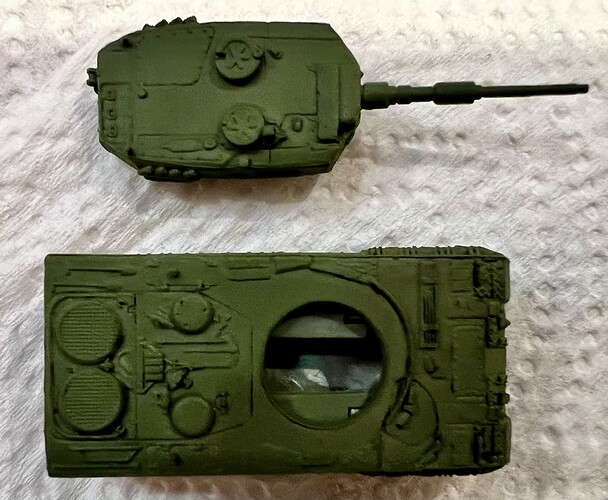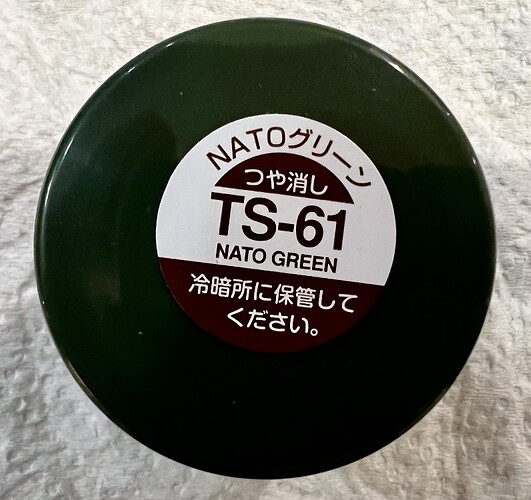Thanks! Great looking build. So Tamiya it is.
I usually buy the Tamiya Nato green in a spray can, and it works pretty well.
Thanks! I will have to try the Tamiya NATO green spray paint.
CARC was a chemical compound unrelated to color. It was formulated to resist chemical agents and the agents used to clean a vehicle/system after exposure. Hence Chemical Agent Resistant Coating.
The various paints were FS (Federal Spec) for each color: green, black, brown, chocolate, sand, etc. The most-frequently cited schemes used US MERDC US Mobility Equipment Researach & Design Command.
USMC tended to use the Tropic Verdant colors.
US Army tended to use Winter Verdant.
As always, local variations and schemes often popped up.
Yes. It comes from the manufacturer that way. It’s the same color.
Asked and answered. Nato Green and Forest Green are not the same. There is no “CARC Green”. The Strykers and green Abrams are Forest Green. The 3 color Abrams is NATO Green (US). You can get either color from several different manufacturers, but I recommend AK RC as the best match. Forest Green is darker than Nato Green (US).
- and Forest Green is FS 34094, if I understand this right?
Regards Thomas
I have Forest Green as FS34079.
@SSGToms, thank you! I fully understood your first reply and appreciate it.
The original CARC was MIL-C-46168. The last list of colors (1987) was
The “383” colors and the 37030 black are used in the three-color camouflage schemes.
That specification was cancelled in 2005 and replaced by MIL-DTL-53039 and MIL-DTL-64159, which I believe are the current specifications.
Forest Green was a color in previous four-color system and is not the same as the Green 383 used in the three-color NATO scheme.
KL
No.
Tamiya’s NATO Green, as well as NATO Brown & NATO Black, were formulated & released to coincide with their release of the Leopard 2A5/A6.
As others have written, it has NOTHING to do with U.S. CARC Green. A number of companies do CARC Green. I’m currently using Gunze FS34094 (can’t remember their range number - look it up if it’s going to keep you awake not knowing) because that’s what I had & my research guided me to that as being pretty close
To see the 2 colours side x side, you’ll see the difference
CARC is not a color but a property of the paint, in whatever color from the MIL standard is used.
There is a web page about CARC from the OSD. Different colors have small tweaks to improve their performance in various ways that are utterly irrelevant to modelers — for example, CARC green uses additives to better match the reflectivity of chlorophyll, and CARC sand has a higher reflectance to reduce heat buildup inside a vehicle.
When I say unrelated to color, that is because the color characteristics were picked after the development of the CARC compound itself. Like going to Home Depot, tinting for IR reflectance reduction and reducing radiant heating from the sun is not a property of the CARC, it is a pigmentation identical to that used for non-CARC applications. The resins and solvents are the mechanism for resisting chemical agents.
The resins for the 686A are identical to those for the Green.
Another thing to add about this color discussion is that CARC paint desaturates or fades overtime.
I was in an Infantry unit back in the early to mid 1990s with Bradleys-the NATO 3 color camo on them was faded/desaturated. I’m not 100% how old they actually where-I had someone in the unit claim that they checked the SN on one and it was the same vehicle they where on in Desert Storm, but took that would a huge grain of salt. The one thing I am sure of is the 8th Infantry Division was reflagged as First Armored Division in 1992 or so and I made it to the unit in 1995. They also had some of the ODS updates (Exhausts and Dog house for the gunners sight) on them, so I’m guessing they where built or rebuilt not long before I got there. Anyways we had a change of command right before I ETSed in 1997 and we had a Bradley repainted for the ceremony and the color difference was huge-the color was much darker vs the others in the motorpool it was parked next to. Another fun fact-when we deployed to Bosnia in 1995, we had to paint IFOR on our vehicles-the troops tried using CARC paint, but it wasin short supply and the low temps (we where doing this in Germany in December) so some vehicles had krylon sand spray paint used on them, which was a tinge lighter/whiter then CARC Sand.
I’ve recently seen a HEMTT Wrecker at work that was nearly grey-green from being exposed to the elements.
Another thing to consider is that even with modern digital photography and post processing, colors can look really strange or off. I’ve seen photos of Polish M1A1s shift from CARC green to an Apple Green, depending on how badly the photo has been processed. You also see this to an extent with the new IR Camo on the M1A2 SEP v3s
I think fading is endemic to nearly every paint I saw in the Army 1970-1997, and what I’ve seen on Fort Benning in recent years. Some of the British greens seem very glossy and a bit more resistant, but their exterior seems to yellow over the base coat. I don’t know their application technique or chemistry, but it’s observable.
The unrestored/unpreserved artifacts at the Collection on Benning have varying degrees of fade, including the WW2 German vehicles we’ve stripped down to original paint (e.g.: the Tiger E 712).
Here’s a VERY early M4A1 getting an IR bath to cure the OD Shade (x) as it rolls out of production.
I think the current fleets of US vehicles get something similar at the factory, but I don’t know the facts. Maybe a side trip to ANAD?
Modern specs are contained in MIL-DTL-53072. There is a topcoat, but there is a lot of discussion about the base substrate, pre-treatment, primer, and finally topcoat(s). Zinc was added in the last couple of decades to resist corrosion and, I presume, fading.
Here are some resources for current work, first generated in 2012.
The latest topcoats have significant UV resistance (called delta-E) when applied using the polymeric coatings. The earlier silica-based flattening agents have been cancelled. In addition, the ARL (Army Research Laboratory) developed rattle-can touch ups of the primers and topcoats. These are thought to facilitate organizational and crew repairs of damaged surfaces. (DOD reference paper 2017-941059).
Well, lots of great information that has been posted in this thread.
The answer to the question is yes, I have toured the General Dynamics Land Systems-Canada (GDLS-C) in a plant in London, Ontario, Canada , I have a paint sample and it is a 100% match for the Tamiya XF-57 “NATO Green” and yes you can use it for Strykers.
Now, at 1/35 scale you will have to add Buff or Field Grey as it is way too dark out of the bottle to make the paint look correct at 1/35 scale.
Welcome to the forum. And you are correct - there are several posts on this forum relating to the absolutely provable phenomenon of scale effect. There are some who will claim color X is perfect for say, US Modern Sand, and while that may be true at 1:1, I have also in more than one post demonstrated how many shades of it can appear even in the same photo.
Welcome! Eh?!
Spent a lot of time in your neck of the woods. Mostly Ottowa and Petawawa (CFB and the NRU sites), and some in Quebec.
Thanks for the insights!
